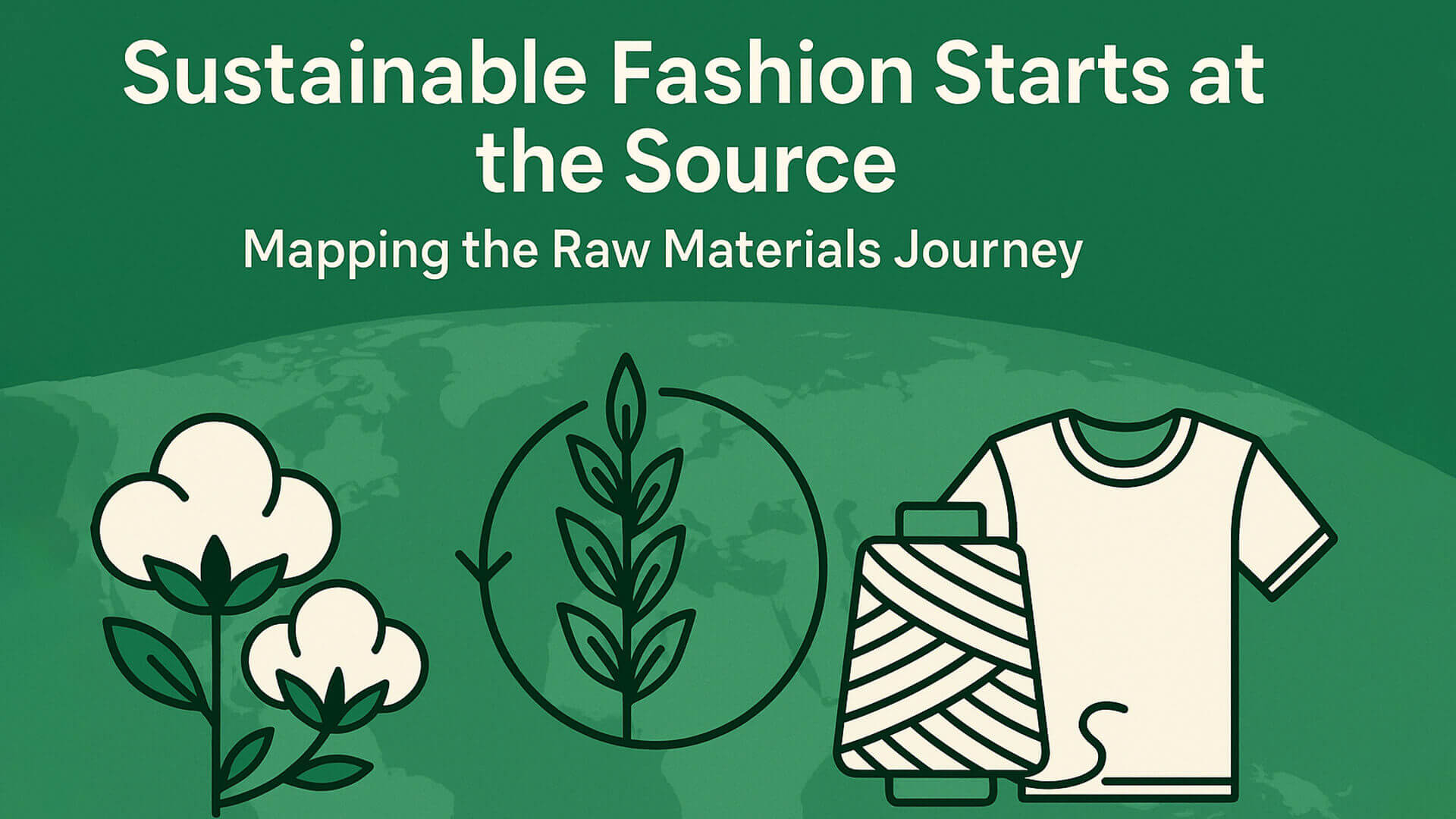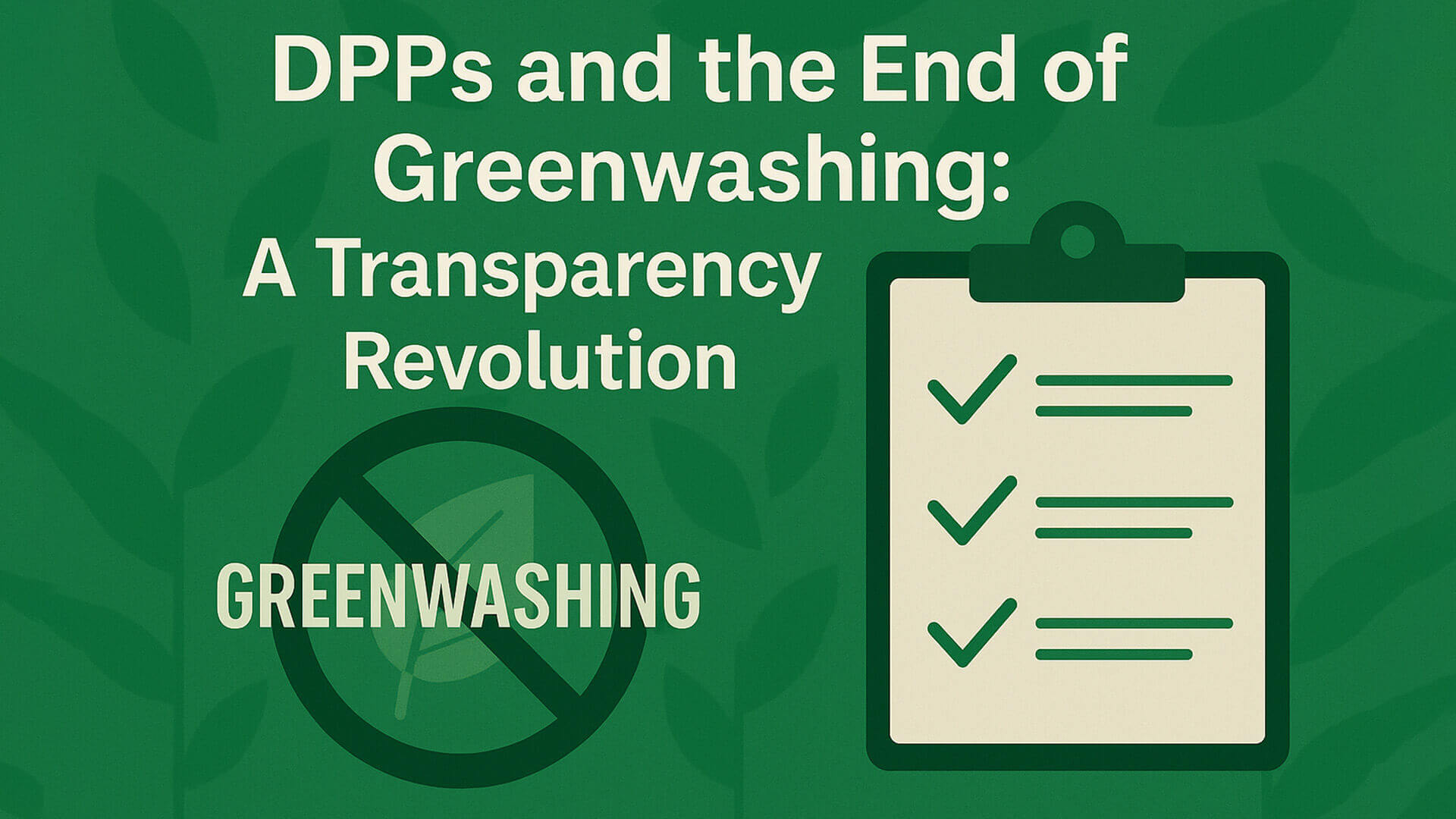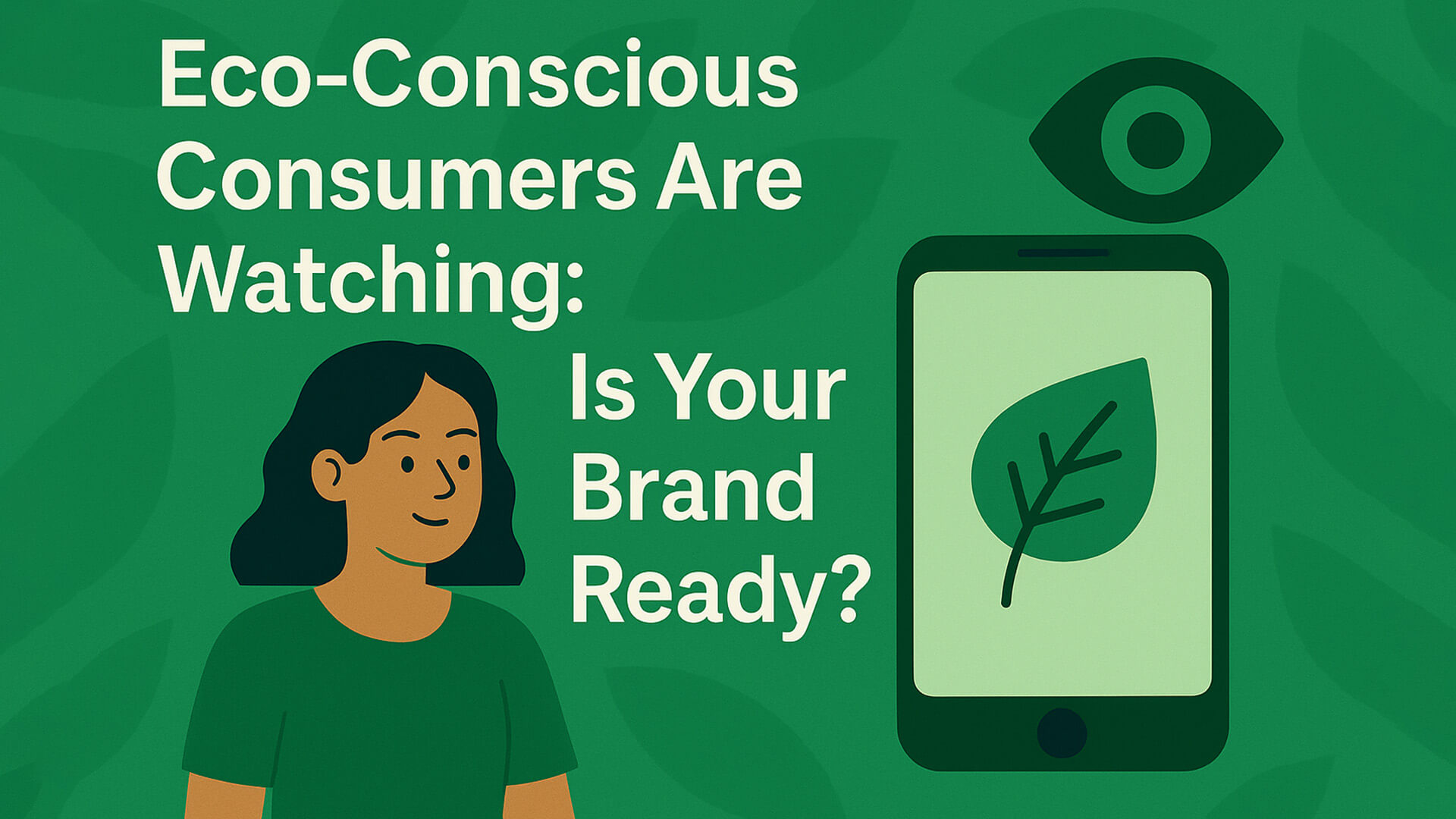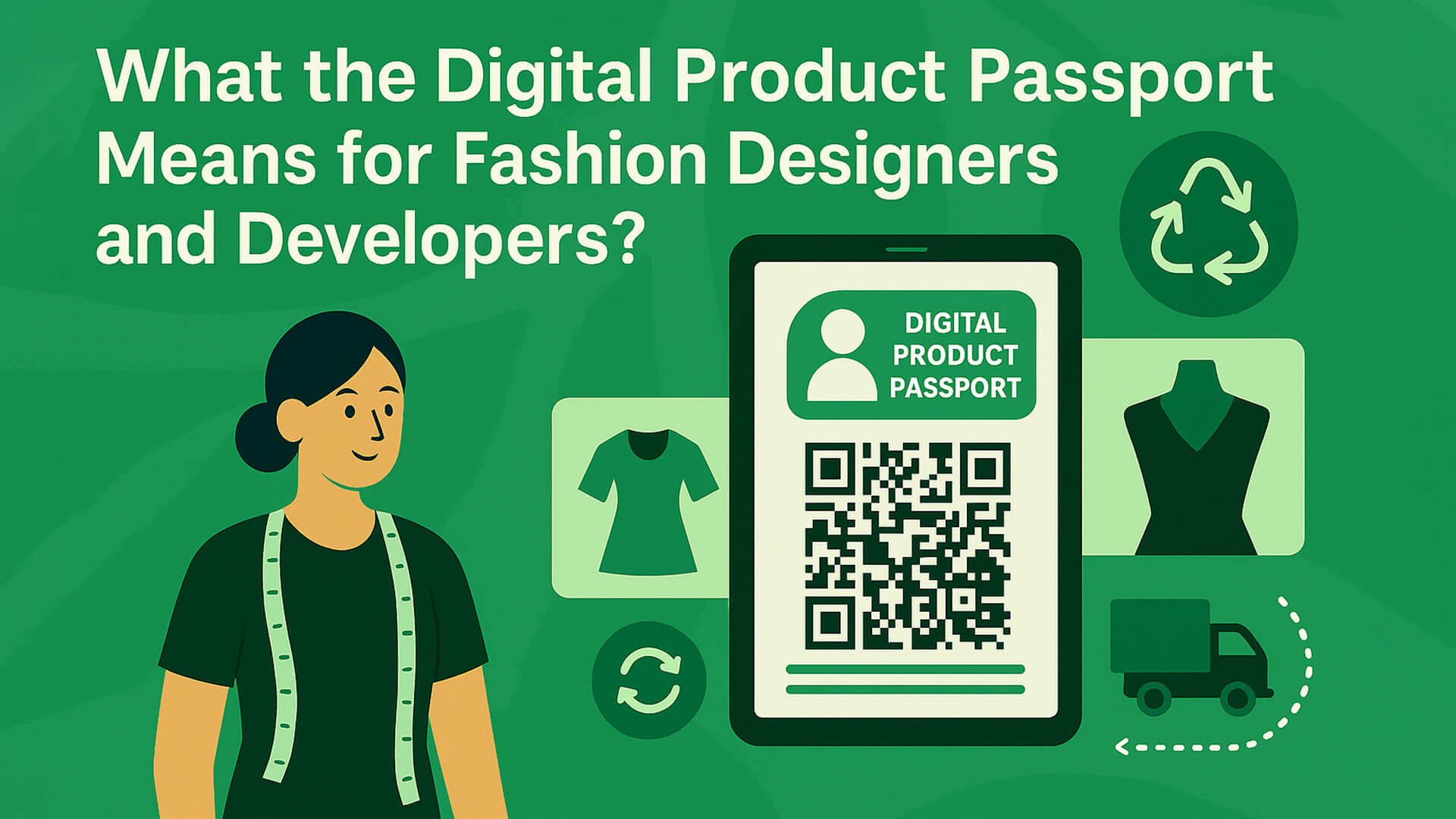- info@greenthreadsdpp.com
- Southampton, United Kingdom
The Role of Digital Twins in Product Lifecycle Management
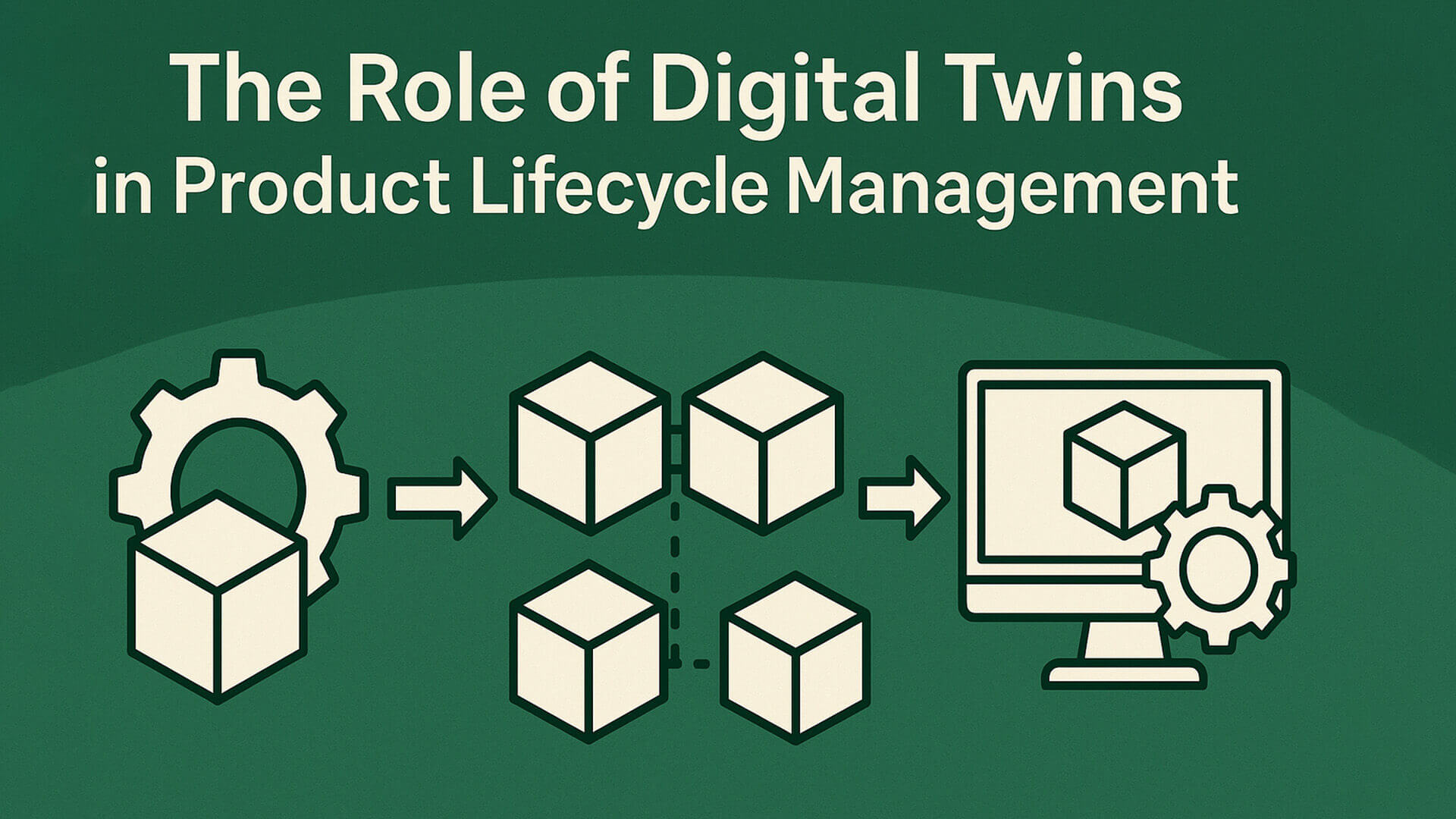
Introduction: Understanding Digital Twins
Imagine having a real-time, virtual copy of every product your company makes: one that updates continuously based on real-world data. That’s the power of a Digital Twin. Originally developed for engineering and aerospace, digital twins are now entering new industries, including fashion and textiles, where they are reshaping how products are designed, made, sold, and reused.
A digital twin is a dynamic, digital representation of a physical item. It reflects a product’s current status, usage, and performance by integrating data from design systems, sensors, supply chains, and user feedback. In short, it allows companies to visualise and interact with a product as it evolves.
As sustainability, traceability, and personalisation become core business values, digital twins are increasingly essential. They are becoming a critical tool within Product Lifecycle Management (PLM): helping companies track and optimise products from conception to retirement. With more pressure to go circular and transparent, digital twins provide a bridge between physical products and digital intelligence.
What Is Product Lifecycle Management (PLM)?
Product Lifecycle Management (PLM) is the strategic process of managing a product’s journey from initial idea through design, production, use, and eventually disposal or recycling. It involves people, data, processes, and tools, all aimed at improving efficiency, reducing waste, and extending product value.
Traditionally, PLM systems are used to:
-
Centralise product data
-
Manage design iterations
-
Track supplier and production inputs
-
Maintain version control across teams
-
Ensure regulatory and quality compliance
In the past, PLM systems were mainly used in automotive, manufacturing, and tech. But today, industries like fashion, consumer goods, and circular retail are adopting PLM to gain tighter control over sustainability, cost, and brand consistency.
However, traditional PLM systems have limitations. They often stop once the product is shipped or sold, and they rarely capture real-world use, consumer feedback, or end-of-life outcomes. That’s where digital twins add new value by extending PLM into a live, intelligent process that evolves alongside the product itself.
How Digital Twins Enhance PLM
Digital twins add a layer of real-time intelligence to PLM by turning static product records into dynamic, living profiles. Each digital twin acts as a virtual version of a physical product, updating continuously as new data flows in.
Here’s how digital twins enhance PLM:
Real-Time Monitoring
A digital twin tracks how a product is used, how long it lasts, and when it needs repair or replacement. This real-world feedback loop supports better design and quality control.
Closed-Loop Feedback
Design teams gain insights into how products perform in the real world, enabling iterative improvements and evidence-based innovation.
Enhanced Traceability
Every stage of a product’s journey, from materials to manufacturing to customer can be logged and visualised, helping brands meet compliance and sustainability goals.
Support for Circular Economy
Digital twins can store data related to reuse, recycling, and resale. When it’s time for a product to be repaired or repurposed, the full history is readily available.
Consumer Engagement
Through QR codes or NFC, consumers can access their product’s digital twin, view care instructions, track their impact, and even manage resale or return.
By integrating digital twins, PLM becomes smarter, more connected, and more circular.
Use Cases Across the Fashion and Textile Industry
The fashion and textile industry is well positioned to benefit from digital twin technology, especially as it faces growing pressure for traceability, circularity, and compliance.
Smart Garments
High-performance clothing and wearable tech use digital twins to monitor usage, stress points, and wear patterns. This data can inform redesigns or trigger alerts for maintenance.
“Ralph Lauren's smart jacket for Team USA during the Winter Olympics integrated thermoregulating tech with data feedback loops by paving the way for performance-driven digital twins in outerwear.”
Sustainable Supply Chains
Brands can track each product’s environmental footprint across the supply chain including fibre origin, dyeing methods, shipping routes, and factory certifications.
“Kering Group (which owns Gucci, Balenciaga, and Stella McCartney) uses digital environmental profit & loss (EP&L) tools that function like digital twins by mapping and quantifying impact across the supply chain.”
Digital Product Passports
A digital twin forms the foundation of a Digital Product Passport (DPP), allowing garments to carry a complete digital history for resale, recycling, or verification under EU legislation.
“Pangaia has partnered with Eon to integrate digital passports into their garments, allowing users to scan a QR code and access detailed information about material sourcing, care instructions, and end-of-life options.”
On-Demand Production
Digital twins are used to simulate and test designs virtually before any fabric is cut. This reduces waste, supports mass customisation, and shortens the design-to-market cycle.
“Unspun, a custom jeans brand, uses body scanning and 3D digital twins of each customer to create perfectly tailored jeans by eliminating overproduction and inventory waste.”
Consumer-Facing Circular Services
Brands like Eon, Adidas, and Pangaia are piloting garments with embedded QR or NFC tags that connect to a digital twin — enabling take-back schemes, resale, and care education.
“H&M’s Circular Design Story collection included garments embedded with NFC tags connected to digital twins, supporting future take-back schemes and educating consumers on how to reuse or recycle each item.”
These examples show that digital twins are not just a futuristic concept, they’re being deployed right now to reshape how fashion is made, used, and remembered. From luxury labels to tech-led start-ups, the industry is evolving by one digital twin at a time.
Benefits of Integrating Digital Twins into PLM
Integrating digital twins into Product Lifecycle Management (PLM) unlocks a wide range of advantages that extend far beyond traditional product tracking. By pairing physical products with their virtual counterparts, brands can gain real-time visibility into how items are designed, produced, used, and even reused. This smart integration bridges the gap between intention and impact by helping companies innovate faster, reduce waste, improve compliance, and build deeper connections with their customers. Whether you're aiming to support circular fashion goals, prepare for upcoming regulations, or simply modernise your product strategy, digital twins offer a powerful way to future-proof your operations. The following are some of the key benefits businesses are seeing today.
Improved Product Design
One of the most immediate and impactful benefits of integrating digital twins into Product Lifecycle Management (PLM) is the ability to significantly enhance product design. Traditionally, designers rely on prototypes, sampling rounds, and past intuition to inform their decisions. But with digital twins, design becomes a continuous, data-driven process that evolves with real-world feedback and performance insights.
A digital twin captures every detail of a product from its original design files and material specifications to how it is used, worn, and even returned or repaired. This feedback loop allows design teams to understand not just how a product was made, but how it performs once it leaves the studio.
For instance, if certain garments frequently experience wear in specific areas (like elbows or seams), designers can adjust future collections with reinforced stitching, alternative materials, or design tweaks. If products are being returned due to poor fitness or functionality, this information feeds directly into pattern and construction refinements by reducing waste, improving satisfaction, and enhancing brand trust.
Moreover, digital twins support virtual prototyping. This allows design and development teams to simulate different colourways, material combinations, or environmental impacts without physical sampling. It speeds up decision-making and enables more sustainable design iterations.
“Adidas uses digital twins to test performance and durability across footwear lines, helping them reduce product flaws and fine-tune performance features long before a shoe hits the market.”
By enabling smarter, faster, and more user-informed design, digital twins are transforming creativity into a circular and intelligent process.
Faster Innovation Cycles
In traditional product development, innovation can be slow and expensive with repeated rounds of sampling, prototyping, and physical testing. Digital twins change this by enabling virtual testing environments, where different materials, construction methods, and styles can be trialled without producing a single physical item. This not only saves time and resources but also empowers design teams to iterate rapidly.
Real-time feedback from existing products (via wear patterns, customer reviews, and returns data) feeds directly into new design cycles. This supports agile development, where updates and improvements are continuous, not seasonal. Brands can react to trends or performance issues instantly, rather than waiting for the next collection.
“Nike uses digital twins within its design innovation team to model and simulate performance under various conditions, speeding up product testing and reducing development lead times.”
Reduced Environmental Impact
With accurate, real-time data flowing through the product lifecycle, brands gain a powerful tool for improving environmental performance. Digital twins provide visibility into energy and water use, waste generation, and carbon emissions from raw material extraction to final delivery.
Armed with this data, companies can pinpoint hotspots of environmental harm and take action. For instance, they might shift to lower-impact materials, streamline production techniques, or reduce air freight. They can also simulate the environmental impact of a product before it’s made by making sustainability a proactive choice, not a post-launch fix.
“Stella McCartney uses digital tools integrated with EP&L accounting to track and reduce environmental impacts, applying insights from previous seasons to new design decisions.”
Enhanced Compliance and Transparency
With legislation like the EU’s Ecodesign for Sustainable Products Regulation (ESPR) approaching, brands must be prepared to disclose detailed product information, from sourcing to end-of-life handling. Digital twins make this easy by logging all inputs and outputs at every stage of the product journey.
Having a single source of truth helps brands demonstrate compliance with standards such as GOTS, OEKO-TEX, or ISO 14001. It also simplifies audits, certifications, and reporting. Whether it’s proving carbon reduction claims or verifying ethical sourcing, digital twins enable a level of clarity that static databases can’t match.
“Hugo Boss is piloting digital twins to improve traceability and meet growing demands for ESG (Environmental, Social, Governance) reporting.”
Greater Customer Loyalty
Modern consumers expect more than aesthetics, they want authenticity. By allowing access to digital product stories through QR codes or NFC tags, digital twins offer a rich, interactive experience. Customers can explore how a product was made, who made it, how to care for it, and even how to extend its life through repair or resale.
This transparency builds trust. When people know the story behind what they wear, they feel more connected to it and to the brand that created it. In turn, this leads to stronger brand engagement, more informed choices, and increased repeat purchases.
“Chloé partnered with Eon to give customers access to digital IDs that showcase a garment’s sustainability journey, enhancing brand credibility and emotional connection.”
Support for Circular Business Models
Digital twins are a foundational tool for supporting reuse, resale, rental, and repair. By recording the condition, ownership, and maintenance history of a product, brands and platforms can easily assess whether an item is fit for second-hand sale, refurbishment, or recycling.
This not only supports circularity goals but also opens up new revenue streams. Brands can offer buy-back programmes, authenticate second-hand goods, or reward customers who keep garments in circulation. With a digital twin, every product retains its identity and value long after its first sale.
“Eileen Fisher uses digital profiles to power its resale platform, allowing pre-owned items to be authenticated, priced fairly, and reintroduced into the marketplace.”
Digital twins are revolutionising Product Lifecycle Management by closing the loop between design, production, consumer use, and circular recovery. They help brands work smarter, respond faster, and operate more sustainably. Meeting the needs of both today’s consumers and tomorrow’s regulations.
Challenges and Considerations
While digital twins offer powerful benefits for product lifecycle management (PLM), integrating them into fashion and textile systems does come with its own set of challenges. As with any transformative technology, the path to adoption requires careful planning, investment, and collaboration across multiple departments and supply chain partners.
Data Integration and Infrastructure
To create a true digital twin, data must flow seamlessly between systems; from design and manufacturing tools to inventory platforms, logistics databases, and consumer-facing apps. Many fashion brands still operate with fragmented systems or legacy software that lacks interoperability. Bridging these silos requires robust digital infrastructure and new workflows that support real-time updates and data sharing.
Data Accuracy and Standardisation
A digital twin is only as good as the data that powers it. Inconsistent labelling, missing supplier records, or unreliable third-party data can lead to errors or gaps in traceability. Without clear standards, brands may struggle to ensure consistency across suppliers and partners. Initiatives like the EU’s Digital Product Passport (DPP) framework are beginning to address this, but global alignment is still in progress.
Privacy and Ownership
As digital twins increasingly capture data from consumers (e.g. wear patterns, ownership transfers, or returns), questions of privacy and data ownership emerge. Who controls this information, the brand, the customer, or a third-party platform? Clear data governance policies and privacy compliance (e.g. GDPR) are essential to maintaining trust.
Cost and Resource Commitment
Building and maintaining a digital twin ecosystem is not a one-off task; it requires ongoing investment in software, hardware, training, and human resources. For small and mid-sized brands, this can be a barrier to entry unless shared platforms or open-access solutions are made available. Demonstrating long-term ROI will be key to securing leadership buy-in.
Change Management and Culture Shift
Introducing digital twins often requires teams to adopt new ways of working. Designers, developers, sourcing teams, and sustainability leads must collaborate in ways they may not be used to. Resistance to change, lack of training, or internal silos can slow down adoption. Strong leadership, education, and clear benefits are needed to drive cultural alignment.
While these challenges are real, they are not insurmountable. With the right strategy, tools, and partners, brands can implement digital twins in phases, starting with high-impact pilot projects and scaling over time. The key is to view these challenges not as obstacles, but as part of the learning curve that leads to a smarter, more sustainable future.
The Future of PLM with Digital Twins
As sustainability, regulation, and digital transformation reshape the global fashion landscape, Product Lifecycle Management (PLM) is evolving into something far more intelligent and interactive. At the centre of this evolution is the digital twin, a technology that doesn’t just mirror the physical product, but enables its lifecycle to be tracked, optimised, and extended in real time.
The future of PLM will be defined by dynamic, data-rich systems that go beyond traditional product development and supply chain management. Instead of managing static records, brands will oversee living digital twins that update continuously across sourcing, manufacturing, sales, and end-of-life processes.
Here's what lies ahead:
Full-Spectrum Supply Chain Synchronisation
Digital twins will connect all players in the value chain, from fibre producers to recyclers, through shared digital infrastructure. This means real-time traceability, seamless handoffs, and improved accountability at every stage.
AI-Powered Decision Making
Machine learning and predictive analytics will enhance PLM by using data from digital twins to optimise inventory, forecast demand, reduce waste, and suggest design tweaks based on performance insights.
Consumer-Centric Product Ownership
As digital twins become accessible to customers via QR codes or NFC, consumers will manage their products’ lifecycle, from care and repair to resale or recycling. Brands can engage them with digital incentives, content, and product history.
Circular Business Models as Standard
Digital twins will make it easier for brands to adopt rental, resale, repair, and reuse schemes. Each product will come with a verified digital record that proves its authenticity, condition, and sustainability credentials; essential for scaling circularity.
Global Policy Integration
As regulations like the EU’s Ecodesign for Sustainable Products Regulation (ESPR) and Digital Product Passport (DPP) become standard, digital twins will be central to compliance, automating reporting and simplifying third-party verification.
In the future, PLM will not just manage products, it will manage product intelligence. Digital twins will shift fashion away from reactive, linear systems to adaptive, circular networks. They’ll support not just efficiency, but responsibility. Not just sales, but stewardship.
The brands that embrace this transformation early will lead the way proving that digital innovation and environmental leadership can go hand in hand.
Conclusion: Turning Insight into Action
Digital twins are redefining what it means to manage a product’s lifecycle. From the moment a garment is imagined to the day it’s repaired, reused, or recycled, the digital twin captures every step, creating a thread of truth that connects people, systems, and decisions.
For brands navigating sustainability, regulation, and consumer expectations, this is a breakthrough. PLM systems can no longer be static databases, they must become dynamic, intelligent tools that reflect the real world and respond to it.
Now is the time to act. Start with a pilot project. Map your product data. Explore how digital twins can enhance design, production, and post-sale services. And choose partners who understand both the technology and the ethics behind it.
Because in tomorrow’s fashion industry, it’s not just the product that matters, it’s the story, the impact, and the intelligence behind it.
References
-
Accenture & Dassault Systèmes. (2021). Digital Twins: Adding Intelligence to the Real World
-
European Commission. (2024). Ecodesign for Sustainable Products Regulation (ESPR)
-
McKinsey & Company. (2023). The State of Fashion Technology
-
Ellen MacArthur Foundation. (2022). Circular Business Models: Redefining Growth in Fashion
-
Fashion for Good. (2023). Unlocking the Future of Circular Fashion with Digital IDs
-
Eon Group. (2024). The Connected Product Economy: Scaling Digital IDs and Product Twins
-
World Economic Forum. (2022). Digital Product Passports: The Key to Circular Value Chains

